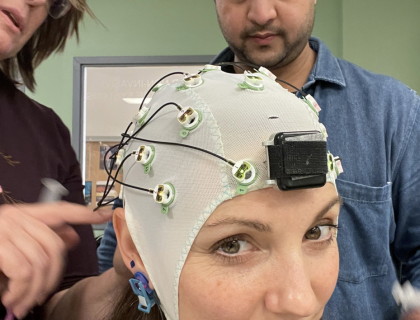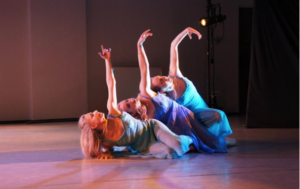Mobile brain imaging in butoh dancers

https://www.vangeline.com/research
.
Human experience and inventiveness have no limits.
I recently discovered this preprint (title, authors and abstract pasted below) as I was browsing biorxix, the archive of biology-related preprints, and with it I learned about the existence of Butoh dance in Japan and elsewhere, including the New York Butoh Institute in Manhattan. So, it took a while for me to take in the emergence of a form of dance that is extremely expressive, as if the 100 years since Isadore Duncan had simply vanished into thin air.
Next I had to realize that apparently, as the technique of electrode-tapping of brainwaves is surging, neither Waltz nor Foxtrot were considered eligible, nor Samba, Rambo, Cha Cha and Moon Dance — nor all the other movements that we fondly remember as part of our adolescence, depending on where we were born and how dexterous we were then and how old we are now.
No, it had to be the one most exotic of all: Butoh. It seems there is a consensus building that Butoh is the coming thing, and we better get used to it and start to shave our skulls.
“Mobile brain imaging in butoh dancers: from rehearsals to public performance”
Constantina Theofanopoulou, Sadye Paez, Derek Huber, Eric Todd, Mauricio A. Ramirez-Moreno, Badie Khaleghian, Alberto Muñoz Sánchez, Vangeline Gand, José L. Contreras-Vidal
biorxiv doi: https://doi.org/10.1101/2023.02.26.530087
ABSTRACT: “Dissecting the neurobiology of dance would shed light on a complex, yet ubiquitous, form of human communication. In this experiment, we sought to study, via mobile electroencephalography (EEG), the brain activity of five experienced dancers while dancing butoh, a postmodern dance that originated in Japan. We report the experimental design, methods, and practical execution of a highly interdisciplinary project that required the collaboration of dancers, engineers, neuroscientists, musicians, and multimedia artists, among others. We explain in detail how we technically validated all our EEG procedures (e.g., via impedance value monitoring) and how we minimized potential artifacts in our recordings (e.g., via electrooculography and inertial measurement units). We also describe the engineering details and hardware that enabled us to achieve synchronization between signals recorded in different sampling frequencies, and a signal preprocessing and denoising pipeline that we have used to re-sample our data and remove power line noise. As our experiment culminated in a live performance, where we generated a real-time visualization of the dancers’ interbrain synchrony on a screen via an artistic brain-computer interface, we outline all the methodology (e.g., filtering, time-windows, equation) we used for online bispectrum estimations. We also share all the raw EEG data and codes we used in our recordings. We, lastly, describe how we envision that the data could be used to address several hypotheses, such as that of interbrain synchrony or the motor theory of vocal learning. Being, to our knowledge, the first study to report synchronous and simultaneous recording from five dancers, we expect that our findings will inform future art-science collaborations, as well as dance-movement therapies.”
https://www.vangeline.com/research
As art connoisseur, and former resident of the Capital District (the district of Albany and neighboring cities including Schenectady and Troy) I cannot help but draw a parallel with eba, electronic body arts, founded by Maude Baum in 1973. The spatial relationships between dancers were somehow converted into sounds. Dancers were sometimes connected with expandable ropes whose state of extension was monitored electronically and converted into shrieks, shouts and murmurs.
From Maude Baum’s website we learn,
“eba is dedicated to cultivating, promoting, and developing an understanding of and public interest in the performing, visual and technological arts; through creation, performance, training, touring and idea sharing. Of equal importance, we endeavor to cultivate an understanding of the inherent creative potential within each of us and to integrate these creative aims with daily life. eba began as an artist collective in 1973. From its simple beginnings, eba has grown into a multifaceted arts organization that is intrinsically woven into the artistic fabric of our Capital Region Community.”
https://www.eba-arts.org/maude-baum-company/
What we can see from this is that arts movements are cyclical, but that each cycle makes use of new tools, so the character of the movement is ever-changing. But the idea that the tool set would ever reach the stage of recording brain waves during a dancing performance was never in our wildest imaginations.
.
.
This entry was posted in Blog and tagged butoh dance, eba, EEG, electronic body art, Maudev Baum. Bookmark the permalink.


Leave a Reply